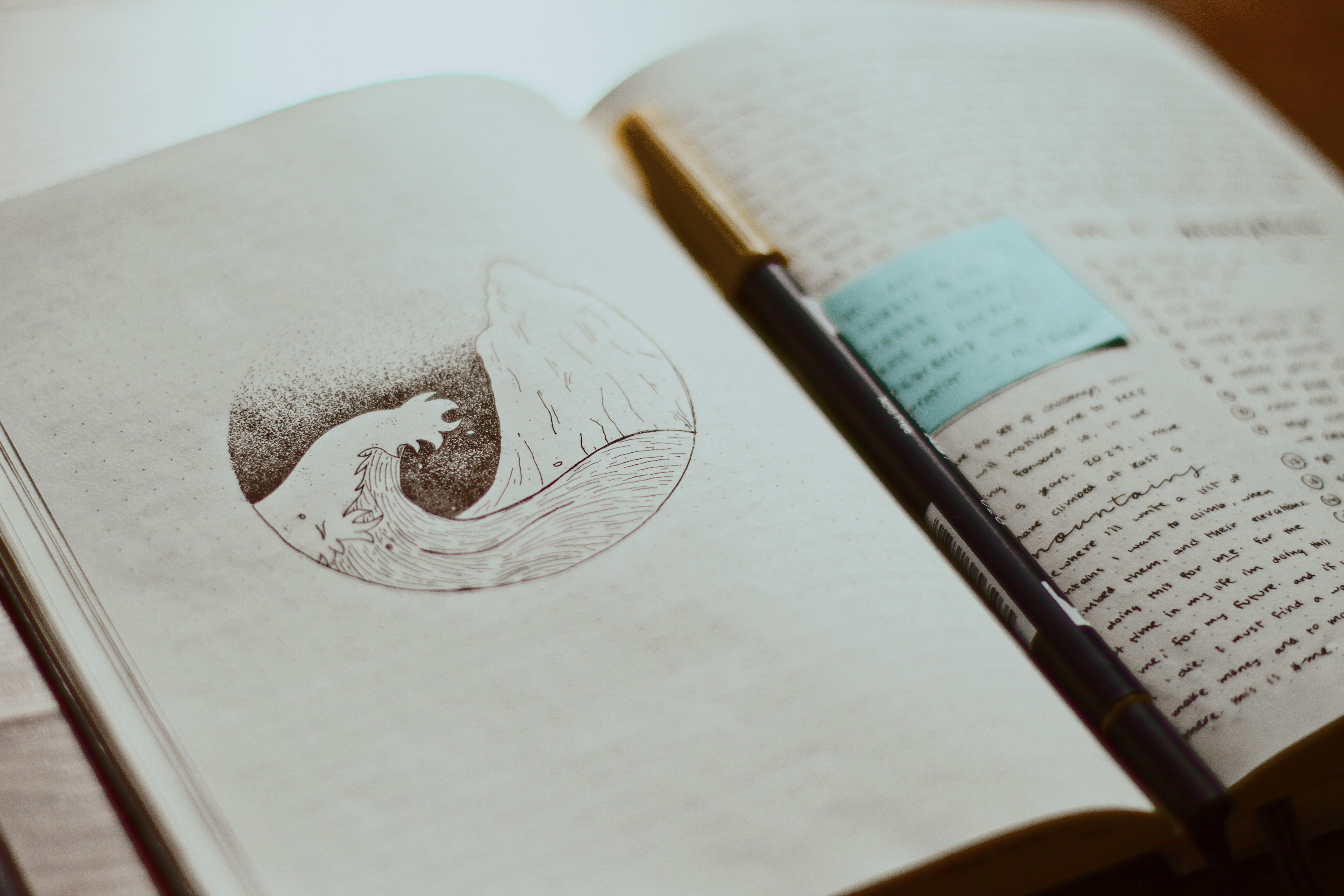ADHD and Dreams: Emil’s Journey of Reflection

The connection between ADHD and dream interpretation is a fascinating area that touches on several psychological dynamics. Here's a breakdown of how they relate:
1. Increased Dream Intensity and Creativity
-
Hyperactive Imagination: Individuals with ADHD often have active, imaginative minds, which can translate into vivid or creative dreams. This creativity may lead to symbolic or metaphorical dream content that’s ripe for interpretation.
-
Divergent Thinking: ADHD brains are known for nonlinear, outside-the-box thinking, which aligns with the way dreams often present abstract or unexpected scenarios.
2. Emotional Regulation and Dream Themes
-
Unprocessed Emotions: ADHD can involve challenges with emotional regulation, which may cause unresolved emotions from the day to surface in dreams. For example, anxiety about forgetting something might manifest as a dream about being lost or unprepared.
-
Repetitive Dream Content: Difficulty managing stress or self-doubt can lead to recurring dream themes, such as being chased or failing an important task.
3. Sleep Patterns and Dreaming
-
Sleep Irregularities: Many people with ADHD experience issues with sleep, such as insomnia or delayed sleep phase syndrome. Poor sleep can lead to fragmented or unusually vivid dreams due to disrupted REM cycles.
-
Dream Recall: Sleep irregularities might also enhance dream recall, making it easier for someone with ADHD to remember and analyze their dreams.
4. Dream Interpretation as a Coping Tool
-
Insight into Unmet Needs: For individuals with ADHD, dream interpretation can be a way to gain insight into unmet needs, such as feelings of being overwhelmed or a desire for structure.
-
Therapeutic Potential: Exploring dreams can help individuals identify patterns of thought or emotion that may influence their waking lives, potentially serving as a self-regulation tool.
5. Hyperfocus and Dream Analysis
-
Engagement with Symbolism: ADHD’s tendency for hyperfocus can make dream interpretation particularly engaging. A person might become deeply absorbed in analyzing the layers of meaning within a single dream, leading to useful insights about their thoughts and feelings.
-
Exploration of Identity: This process can also help individuals with ADHD better understand their unique perspectives, strengths, and challenges.

Tips for People with ADHD Using Dream Interpretation:
-
Journal Dreams Immediately: Keep a notebook or your phone by the bed to capture dreams before they fade. ADHD can make recall fleeting.
-
Focus on Recurring Themes: Look for patterns in dreams that might connect to specific emotions or challenges in your waking life.
-
Simplify Symbolism: Break down complex dream imagery into simpler associations to avoid getting overwhelmed.
-
Use Dreams as a Self-Insight Tool: Interpreting dreams can be a way to practice focusing and reflecting, which are valuable skills for managing ADHD.
The interplay between ADHD and dream interpretation lies in how both reflect the mind's creativity, emotional processing, and nonlinear thinking. Dream interpretation can be a powerful tool for self-awareness and emotional regulation, especially for those navigating the unique challenges of ADHD.
Case Study: Dream Journaling for Self-Discovery - Emil’s Journey with ADHD
Background: Emil's Restless Nights
Emil, a 34-year-old marketing professional from Zurich, Switzerland, had always described himself as a dreamer. However, his vivid dreams often felt more like chaotic adventures than restful escapes. Diagnosed with ADHD in his early twenties, Emil struggled with focus, especially when faced with detailed tasks at work. He noticed that his mornings often began with a lingering sense of confusion from the night before—fragmented dreams would hover just out of reach. Intrigued by their intensity, Emil wondered if his dreams could offer insight into his emotions and challenges.
After attending a dream interpretation workshop, Emil decided to try dream journaling. He learned that ADHD might heighten his ability to recall vivid dreams, but it could also make remembering fleeting impressions a challenge. Equipped with these insights, Emil began using his dreams as a tool to explore recurring themes and better understand his inner world.
Step 1: Journaling Dreams Immediately
The first hurdle was Emil’s ADHD-fueled habit of forgetting his dreams minutes after waking up. To counter this, he placed a small notebook and pen on his nightstand. Upon waking, Emil made it a rule to jot down even the smallest details of his dreams, no matter how trivial they seemed.
One morning, Emil scribbled, "Walking through a maze-like office with no exits. Holding a folder I can’t open." Initially, he dismissed it as nonsense, but the recurring image of being trapped in a maze would reappear in several dreams over the next few weeks.
Step 2: Focusing on Recurring Themes
Recognizing patterns in his dreams became Emil’s next goal. Over a month, he noticed a recurring theme: feeling lost, either in unfamiliar buildings or trying to decipher unreadable documents. These dreams often coincided with particularly demanding work weeks. Emil’s reflection revealed a clear connection—his dream mazes mirrored the overwhelm he felt when managing tight deadlines and unclear expectations at work.
By identifying this link, Emil realized that his subconscious was amplifying his daytime stress in symbolic form. This discovery gave him a clearer picture of how his ADHD magnified his feelings of being overwhelmed and trapped.
Step 3: Simplifying Symbolism
Initially, Emil found interpreting his dreams overwhelming. What did the unreadable folders mean? Why was he always in an office? Emil turned to a simple strategy: breaking down dream elements into their basic associations.
-
The office maze: A reflection of his chaotic workflow.
-
The unreadable folder: His frustration with unclear instructions from his boss.
-
The feeling of being trapped: A reminder to address his tendency to procrastinate.
By simplifying his dream symbols, Emil could better understand what his subconscious was telling him without overanalyzing. He realized that these dream symbols were urging him to create structure and clarity in his work life.
Step 4: Using Dreams as a Tool for Problem Solving
Once Emil began interpreting his dreams, he used this practice to refocus his energy during the day. After dreaming about the office maze again, Emil scheduled a conversation with his manager to clarify expectations for an upcoming project. He also began using lists and visual reminders to make his tasks feel more manageable.
Additionally, Emil used dream journaling as a nightly ritual. Writing about his dreams gave him a moment to pause, reflect, and practice focusing—a skill he often struggled with due to ADHD. Over time, Emil noticed that this practice improved his overall self-awareness and helped him manage his emotional reactions better.
Results: Greater Clarity and Self-Awareness
By engaging with his dreams, Emil gained new tools to handle his ADHD challenges:
-
Stress Management: Emil recognized his stress triggers at work and took proactive steps to address them.
-
Improved Focus: Dream journaling became a form of practice for sustained attention, benefiting his work and personal life.
-
Self-Understanding: Emil discovered patterns that illuminated the emotional challenges he needed to address.
Dream journaling not only helped Emil manage his ADHD but also gave him a creative outlet to process his emotions. Reflecting on his dreams gave him clarity about his inner struggles, allowing him to create actionable steps in his waking life.
Conclusion
Emil’s experience highlights the power of dreams as a mindfulness tool for those with ADHD. By journaling his dreams, focusing on recurring themes, simplifying symbolism, and using them for reflection, Emil transformed chaotic nights into a source of clarity and growth. His journey illustrates how understanding dreams can help manage the challenges of ADHD while fostering self-awareness and personal development.



